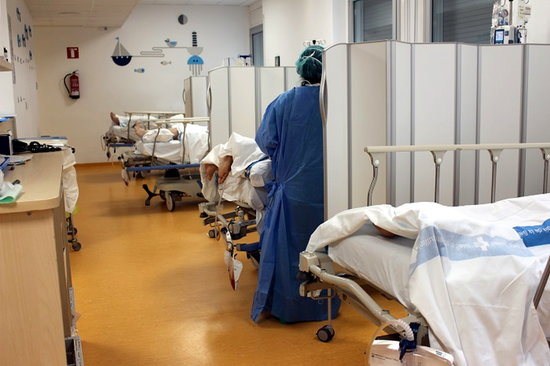Why Covid figures in Spain and Catalonia don’t seem to add up
Reporting delays and methodological differences account for apparent discrepancies

Every day, the Catalan health department and the Spanish ministry of health diligently release the latest Covid-19 figures, with the former now doing so in the morning and the latter doing so in the late afternoon or early evening.
And every day, both authorities report slightly different numbers for Catalonia. For example, according to the Catalan health department, there have been 206,294 confirmed Covid cases, of which 179,162 were diagnosed by either PCR or antigen tests, and 13,670 deaths in Catalonia as of October 19.
On the same day, the Spanish health ministry reported there had been a total of 179,552 diagnoses and 5,919 deaths in Catalonia since the beginning of the pandemic.
As of May 11, which is when the measure was published in Spain’s official gazette, official figures are reported based on information obtained through a system known as SIVIES (‘Vigilance System of Spain’), which is run by the Centro Nacional de Epidemiología at the Instituto de Salud Carlos III public health research institute.
In Spain, health is devolved to the regions - because of this, health authorities from each of Spain’s regions, including Catalonia, must fill in detailed information on each and every coronavirus case confirmed by PCR, ELISA, a rapid antibody test, or antigen detection.
So why aren’t these numbers the same?
Active cases v. past case diagnoses
Well, for one, Catalonia and Spain aren’t reporting the exact same things every day.
If we look at the explanation provided in the daily Spanish ministry report, above the latest figures, it states that it “includes confirmed cases with a Positive diagnostic test for active infection (PDIA) according to the established strategy for the early detection, surveillance, and control of Covid-19.”
This would suggest that although the Instituto de Salud Carlos III does also track non-active past cases as per the official gazette guidelines, figures in the daily reports do not include these diagnoses, but rather only those of people that currently have the virus are added to the total cases figures.
Meanwhile, in Catalonia, the grand total of 206,294 confirmed Covid cases since the beginning of the pandemic includes all positives resulting from a variety of diagnostic tests that do not only detect active cases, such as rapid tests or antibody tests - however, only active cases are used to determine the outbreak risk.
Data update times
Besides this, we also have to factor in the time the data is last updated, which would account for reporting delays and therefore the difference between Catalan and Spanish numbers. As mentioned above, Catalonia releases its latest figures in the morning, usually around 10 am, but Spain’s daily numbers are made public hours later, with figures that are last updated at 2 pm as stated in the report.
The Spanish health ministry reported 390 more new active cases than Catalonia’s health department did - as Spain gets its figures from Catalonia, this could be chalked down to the additional available hours to update the prior day’s data.
Death toll difference
In Catalonia, the death toll includes everyone whose death certificate states they passed away from Covid-19, as reported by funeral homes.
This means the number of fatalities reported by the health department can include people who were not diagnosed with active infections but who were deemed to have likely died of the virus, especially at the beginning of the pandemic when resources were more scarce.
The Spanish health ministry, on the other hand, provides a stricter but not necessarily more accurate vision: only people who have tested positive for an active Covid-19 case and then died are accounted for in Spain’s official toll.